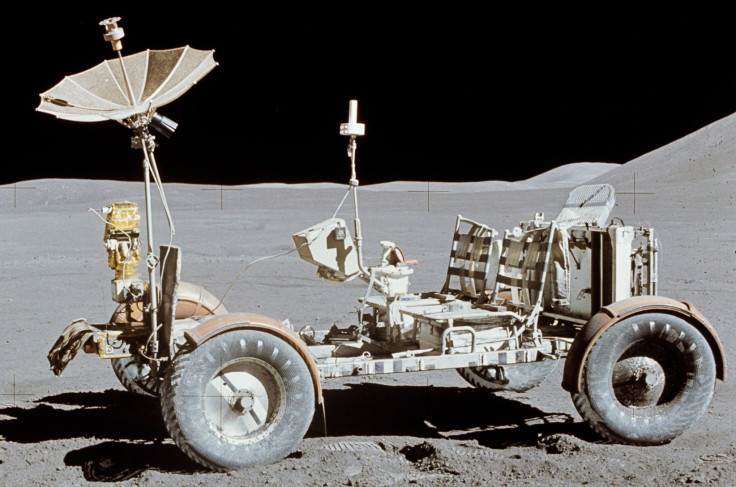NASA Seeking Inputs On New Lunar Rover: Not 'Your Grandfather's Moon Buggy'
KEY POINTS
- NASA is looking for industry inputs on a new moon buggy
- The new vehicle has to last for "at least 10 years" over multiple Artemis missions
- The "next-generation" moon buggy could help expand exploration on the moon
NASA is preparing to go to the moon and it needs a new moon buggy for its Artemis lunar exploration.
NASA earlier in August celebrated the 50 year anniversary of Apollo 15's third and final cruise on the Lunar Roving Vehicle (LRV) built by Boeing. The agency called on American companies Tuesday for inputs on a next-generation lunar terrain vehicle (LTV).
"Most people do a lot of research before buying a car," Nathan Howard, project manager for the LTV at NASA's Johnson Space Center, said in a NASA news release. "We're doing extensive research for a modern space vehicle that will be provided by industry. As we plan for long-term exploration of the Moon, the LTV won't be your grandfather's Moon Buggy used during the Apollo missions."
Basically, the LTV is an "unenclosed rover" that the astronauts can drive on the surface of the moon while wearing their spacesuits. It also has to last for 10 years, over the course of multiple Artemis missions. The idea is to "greatly expand human reach" on the moon "even farther than Apollo."
During the Apollo missions that used the LRV, for instance, the vehicle proved to be "reliable, safe and flexible" as it allowed the astronauts to go miles beyond the landing site. In previous Apollo missions, the astronauts were limited to walking short distances. In fact, during Apollo 17, the LRV allowed astronauts to collect 10 times more samples on foot than the Apolo 11 mission, NASA noted.
"We are trying to encourage advances in electric vehicle capabilities that could result in the most capable rover ever built," said Howard. "The Artemis LTV will be the ultimate terrain vehicle, with advanced power management, autonomous driving, and extreme environment technologies."
In a video, titled "Get In Astronaut, We're Going Exploring," NASA said, "this isn't your grandfather's moon buggy, but it might be his granddaughter's." As part of the Artemis mission, the goal is to send the first woman and first person of color to the lunar surface. The agency also noted that the new LTV will be "safer and high tech."
"NASA is seeking innovative ideas, novel approaches, relevant state-of-the-art commercial technologies, industry proposed solutions and feedback through this Request for Information (RFI) that could lead to the potential development of an LTV for lunar operations," NASA said. "The goal is to allow industry the opportunity to provide information to help inform the development of the LTV."
The deadline for responses to the NASA request for information (RFI) is Oct. 1.

© Copyright IBTimes 2024. All rights reserved.






















